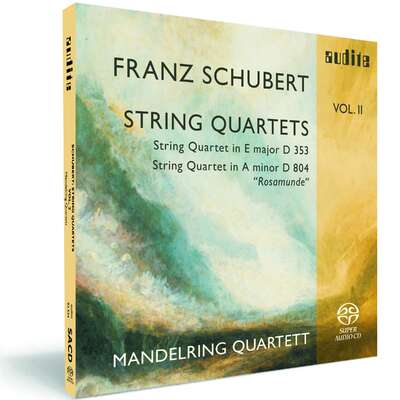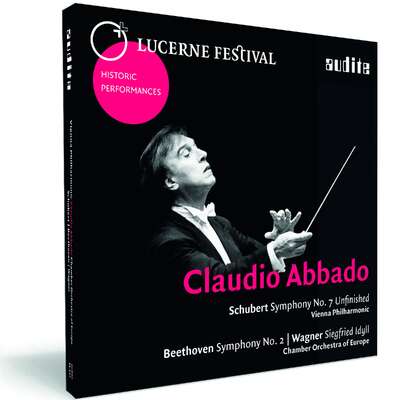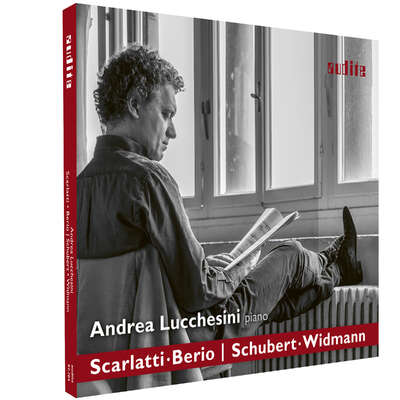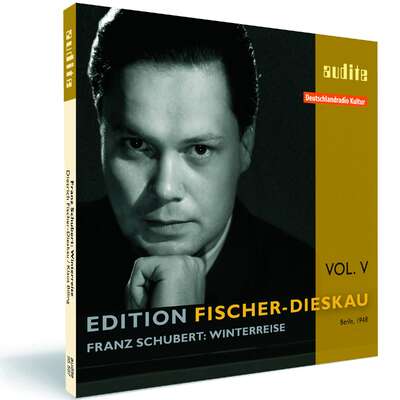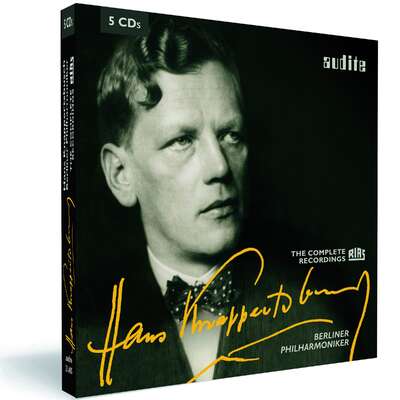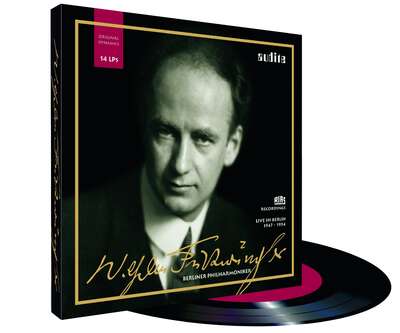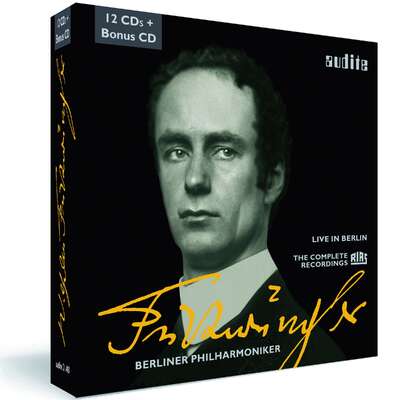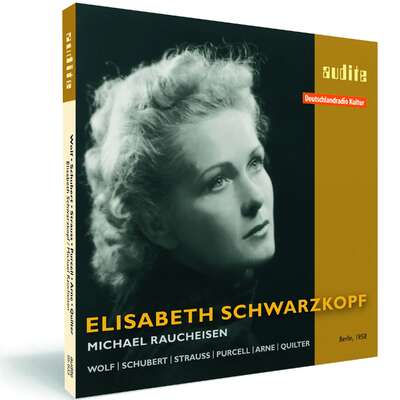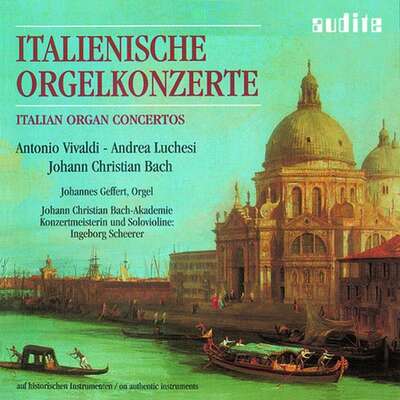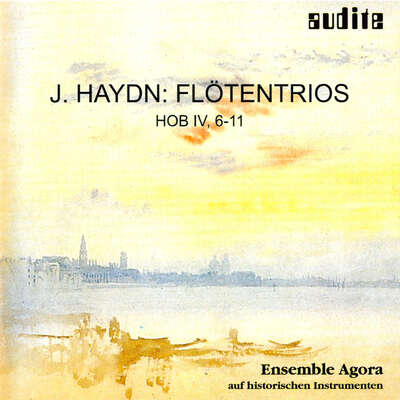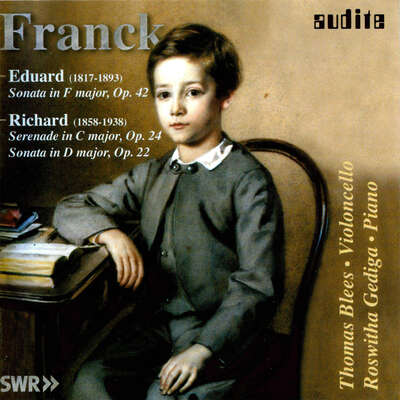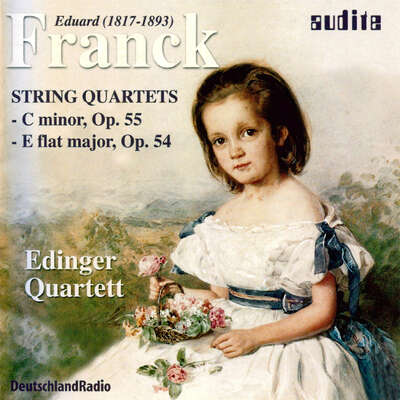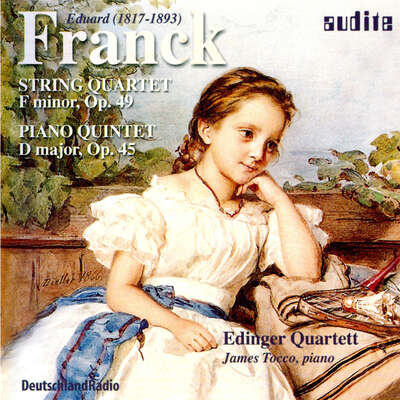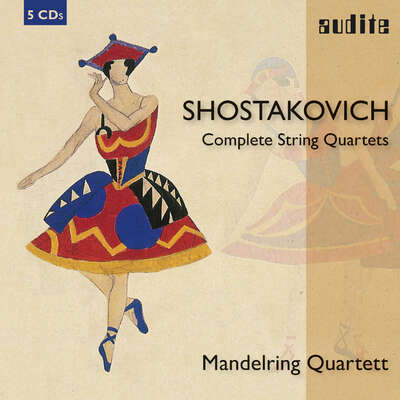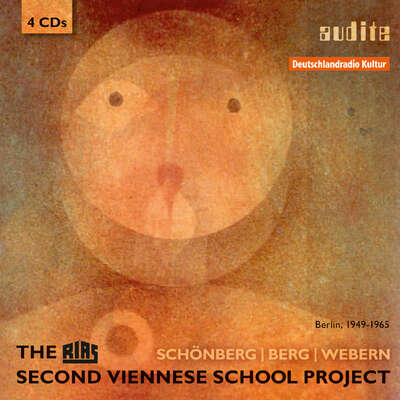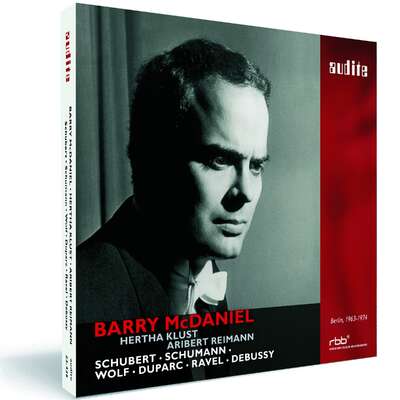
"This is the second volume of the Mandelring Quartett’s projected Schubert cycle and again the playing is excellent." (Strings Magazine)
Details
| Franz Schubert: String Quartets Vol. II | |
| article number: | 92.524 |
|---|---|
| EAN barcode: | 4022143925244 |
| price group: | ACX |
| release date: | 1. March 2005 |
| total time: | 56 min. |
Bonus Material
Informationen
Reviews
Der Reinbeker | 17. Mai 2010, Nr. 9 | Peter Steder | May 17, 2010 Jazz und Klassik
„Chesky Records“ gehört unbestritten zu den führenden audiophilenMehr lesen
www.SA-CD.net | June 2008 | Polly Nomial | June 17, 2008
Like their opening volume in this cycle, the Mandelring Quartett pair aMehr lesen
www.SA-CD.net | June 2007 | Andrew B | June 12, 2007
A truly delightful performance by the Mandelring Quartet, they give aMehr lesen
www.classicstodayfrance.com | Novembre 2006 | Christophe Huss | November 2, 2006
C'est à ce genre de parution que l'on voit l'intelligence d'un éditeur.Mehr lesen
www.musicweb-international.com | September 2006 | Michael Cookson | September 1, 2006
Schubert’s chamber music is particularly well served in the CD catalogues at the moment and I for one am happy with the increasingly wide choiceMehr lesen
A few months ago I reviewed a Schubert string quartet double set from the Brandis Quartet of the: A minor ‘Rosamunde’; D minor ‘Death and the Maiden’; C minor ‘Quartettsatz’ and the G major D.887 on Brilliant Classics 99288. Earlier this year I was delighted to tackle a Schubert four disc set from the Lindsay Quartet. That one comprised the: ‘Death and the Maiden’; ‘Quartettsatz’; ‘Rosamunde’ D.804; B flat D.112; G major D.887 with the C major Quintet D.956 all on Sanctuary Classics Resonance RSB 403.
The ‘Rosamunde’ Quartet was the only one of Schubert’s four string quartets published in his lifetime. Composed in 1824 in the shadow of a fatal illness this brooding work also happens to be one of the greatest ever written. Known as the ‘Rosamunde’ it reuses themes from the composer’s incidental music to the unsuccessful play; it serves throughout as an intimation of the pained memories of happier times. I admire the last movement marked allegro moderato showing as it does the composer’s wealth of invention.
In the ‘Rosamunde’ the performance from the Mandelring presents a secure ensemble yet I was often bewildered with their choice of tempos and the slight amount of passion they provided. Their opening allegro feels too measured and the tranquil andante lacks feeling and tends to lose its way. I also felt that additional vitality and intensity was needed in the third movement minuet. In the concluding allegro the Mandelrings seem reluctant to provide sufficient urgency and vigour, treating the music as if they were handling delicate porcelain. Consequently Schubert’s optimism and spirit never stands a chance of materialising.
My ideal account of the ‘Rosamunde’ is the version performed on period instruments by the eminent Quatuor Mosaïques on Auvidis Astrée E 8580. This is a compelling version noted for the quartet’s special playing where the personality of each member comes across so engagingly. The sublimely emotional second movement andante is played with remarkable sensitivity and poetry, to provide an intensely moving experience. Being familiar with the interpretation from Quatuor Mosaïques I can fully understand how influential music writer H.L. Mencken stated that this music was the proof he needed for the existence of God.
Schubert’s String Quartet No. 11 was almost certainly composed in 1816. At this time in his life Schubert had been highly influenced by his teacher Antonio Salieri. He was also indebted to the works of Mozart and Haydn, especially in the field of chamber music, which they had elevated to become a touchstone of craftsmanship, sonorous delicacy and formal proportions. It was in this context that the teenage Schubert wrote this quartet, probably composed for his family. Its technical demands were far beyond the faculties of even gifted amateurs.
The String Quartet No. 11 is a work fully conceived in Viennese classicism and demonstrates a growing self assurance. Immediate signs of greater maturity are heard in the opening of first movement marked allegro con fuoco, and the minuet combines the earthy stamping rhythm of contemporary dance with a sense of aloofness in the trio. In the final movement rondo Schubert lightheartedly alludes to the main theme of the final movement of Mozart’s Symphony in E flat major, K543 only to turn elsewhere immediately.
In the opening allegro the playing of the Mandelring is tentative although small quantities of vitality are glimpsed. The slow movement andante is given a reverential reading that provides a suitable degree of expression. They once again seem wary in the minuet. I was content with their dynamics yet unfortunately there was insufficient forward momentum. The final movement rondo is adequately performed although I would have preferred more weight.
Overall in these two Schubert string quartets the Mandelrings provide an adequate security of ensemble and their timbre is pleasing. Sadly, I experienced their playing as over-cautious, lacking the appropriate amount of vigour and exuberance, and the readings felt emotionally chilly. The annotation is acceptable and the Audite engineers have supplied an enjoyable sound.
I do not have an alternative version of the E major Quartet that I am able to recommend. However, I hear good reports of the version from the Melos Quartet on their six disc set of the complete Schubert string quartets on Deutsche Grammophon 463 151-2.
The Strad | June 2006 | David Denton | June 1, 2006 Mandelring Quartet: pleasing fluency
I first came across the Mandelring playing Schubert on a Naxos disc issuedMehr lesen
Muzyka21 | 5 (70) - maj 2006 | Stanisław Lubliński | May 1, 2006
Dzialajacy od wielu lat prawie rodzinny zespol Mandelring Quartet – tylkoMehr lesen
Scherzo | N° 204 - Enero 2006 | A.B.M. | January 1, 2006
En la segunda entrega de la integral de los cuartetos de Schubert a cargoMehr lesen
Frankfurter Allgemeine Zeitung | 27. September 2005 | Ulrich Schreiber | September 27, 2005
Totentanz, tumultuös
Das Mandelring-Quartett findet bei Schubert zu strenger Eloquenz
Keines der Streichquartette Franz Schuberts ist auf Tonträgern so oftMehr lesen
Pizzicato | 9/2005 | Guy Wagner | September 1, 2005 Nachdenken über Schubert
Über das Mandelring Quartett, bestehend aus Sebastian Schmidt, Nanette Schmidt, Roland Glassl und Bernhardt Schmidt, haben wir auf diesen SeitenMehr lesen
Auch in dieser Einspielung schaffen es die vier Musiker, eine „Stimmung“ zu erzeugen, die sofort gefangen nimmt. Sie enthält das bekannte Quartett in a-Moll, D. 804 „Rosamunde“ und das etwas vernachlässigte aber ungemein intensive Quartett in E-Dur, D. 353 von 1816, als Schubert erste Ausbrüche aus dem Elternhaus wagt und bei seiner Bewerbung um eine Lehrstelle in Laibach (Ljubljana) scheitert, was ihm ermöglicht hätte zu heiraten.
Wie in der vorhergehenden Einspielung beeindrucken die Natürlichkeit und das Engagement mit dem Schuberts intensive und ergreifende Musik zum Klingen gebracht wird. Technische Schwierigkeiten gibt es für die Interpreten keine; ihr Zusammenspiel und ihr Zwiegespräch sind makellos. Ihr Wissen um das Leben und das Leiden des Komponisten ermöglicht ihnen zudem, die ganze Bandbreite der Gefühle aufzuzeigen, die in diesen Werken, insbesondere im sogenannten Rosamunde-Quartett zum Ausdruck kommt. Wenn wir Vol. 2 dieser Integrale allerdings als etwas weniger zwingend ansehen als Vol. 1, so vor allem, weil das halluzinierende Menuett aus op. 29 nicht die Tiefe und Unerbittlichkeit erreicht, die die Interpretation von „Der Tod und das Mädchen“ hat.
Hingegen ist die Deutung des E-Dur-Quartetts überwältigend. Zudem hat die Aufnahmequalität im Surround-Sound eine Unmittelbarkeit, die den Zuhörer noch enger ins Geschehen einbezieht.
Stereoplay | Juli 2005 | Alfred Beaujean | July 1, 2005 Streichquartett-Kunst auf hohem Niveau
Offenbar geht es hier um eine neue Gesamtaufnahme von SchubertsMehr lesen
Strings Magazine | June/July 2005 | E.E. | June 1, 2005
This is the second volume of the Mandelring Quartett’s projected Schubert cycle (the first featured the E-Major Quartet and the “Death and theMehr lesen
DeutschlandRadio | Sonntag, 16.05.2005 | Norbert Ely | May 16, 2005
Seien Sie willkommen zu einer kurzen wohlwollend-kritischen Auseinandersetzung mit zwei Neuerscheinungen auf dem Gebiet der Kammermusik-CDs. Zum einenMehr lesen
Beginnen wir mit den Schubert'schen Quartetten. Das in E-dur zählt unbeschadet der hohen Opuszahl zu den vergleichsweise früh entstandenen Werken, und allgemein geht man davon aus, Schubert habe sich, als er es schrieb, noch nicht recht von den damals, nämlich 1816, geltenden Vorbildern lösen können. Das Mandelring Quartett belehrt einen da freilich sehr rasch eines Besseren. Sie spielen mit heißem Atem, schärfen die Konflikte, wechseln gedankenschnell zwischen heftigen Ausbrüchen und sekundenkurzen Anklängen an den typischen Wiener Tonfall, so dass man unmittelbar zu spüren bekommt, wie eng die überkommene Formenwelt auch schon zu diesem Zeitpunkt für die Schubert'schen Themen und Melodien geworden war. Das Mandelring Quartett spielt Schubert sozusagen im Aufbruch. Aber sie spielen ihn gleichwohl außerordentlich kontrolliert, und vor allem in dieser Kontrolle der Tongebung und der Artikulation tritt dem Hörer indirekt wiederum das traditionelle Moment des Streichquartetts entgegen.
• Musikbeispiel: Franz Schubert - 1. Satz (Ausschnitt) aus: Streichquartett E-dur op. 125,2 D 353
Wer das E-dur-Quartett von Franz Schubert so heftig beginnt, traut womöglich auch der Idylle des "Rosamunde"-Quartetts nicht über den Weg. Über das Thema des zweiten Satzes ist immer wieder gerätselt worden, vor allem auch über die theatralische Bedeutung, die ihm möglicherweise im dritten Entr'acte der Schauspielmusik zu "Rosamunde" zukommt. Die Tatsache, dass Schubert dieses Thema außerdem nicht nur für die Variationen im a-moll-Quartett verwandte, sondern es auch noch einmal in einem Impromptu aufgriff, weist darauf hin, dass es alles andere als eindeutig ist. Und wie sehr es zum Dunklen, Rätselvollen hin changiert, das tritt nun in dieser neuen Einspielung durch das Mandelring Quartett zutage. Ob es die irrlichternden Sechszehntelfiguren der 2.Violine sind oder die daran anschließenden harmonischen Verwerfungen – stets materialisiert dieses Ensemble das Doppelgesichtige der Schubert'schen Musik.
• Musikbeispiel: Franz Schubert - 2. Satz (Ausschnitt) aus: Streichquartett a-moll op. 29 D 804 ("Rosamunde-Quartett")
Der zweite Satz, Andante, des sogenannten Rosamunde-Quartetts von Franz Schubert in einer neuen Aufnahme durch das Mandelring Quartett. Die Neigung dieses Ensembles, den inneren Konflikten in Schuberts Musik nachzuspüren, schlägt sich nicht minder im Menuett nieder, das eben alles andere als ein verbindliches Menuett darstellt. Nicht einmal das Finale wird in jenem begütigendem Tonfall gespielt, der einem sonst oft genug begegnet – hier schärft immer wieder virtuose Attacke die Gegensätze.
• Musikbeispiel: Franz Schubert - 4. Satz (Ausschnitt) aus: Streichquartett a-moll op. 29 D 804 ("Rosamunde-Quartett")
Soviel zum Mandelring Quartett und seiner neuen Schubert-CD, der zweiten, die im Rahmen der Gesamtaufnahme der Streichquartette bei dem Label "audite" erschienen ist.
Classica-Répertoire | mai 2005 | Antoine Mignon | May 1, 2005
Le Quatuor Mandelring poursuit son exploration des quatuors de SchubertMehr lesen
Hessischer Rundfunk | 11. April 2005 | Maria-Elisabeth Ranft | April 11, 2005 um 17.05h:
Franz Schubert ist von Hause aus ein Kammermusiker, nicht nur die frühenMehr lesen
Ensemble - Magazin für Kammermusik | 2/2005 | Detlev Bork | April 1, 2005 Quartette komplett
Der hoch gelobten ersten Schubert-CD des Mandelring Quartetts folgt nunMehr lesen

